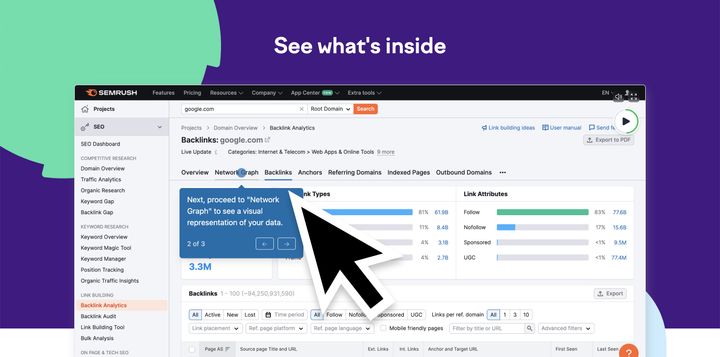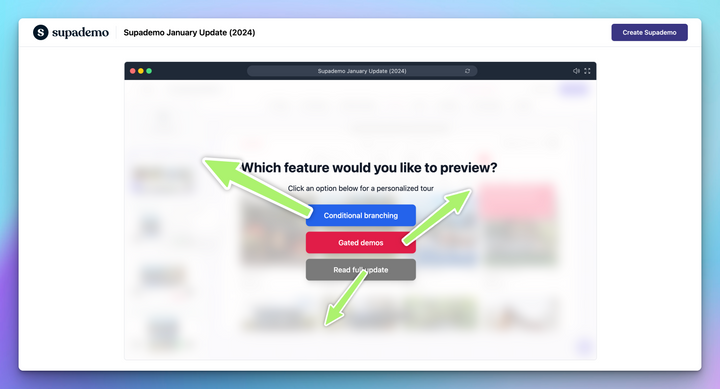In today's competitive business landscape, B2B demand generation has emerged as a powerful marketing tool for driving sales growth. As markets evolve year after year, it is crucial for businesses to adapt their demand generation strategies to stay ahead. Neglecting demand generation or failing to update your approach can result in missed sales opportunities. To help your business maximize demand generation in 2022, this comprehensive guide will provide you with the necessary insights and strategies.
What is B2B Demand Generation?
B2B demand generation refers to the process of creating awareness and generating interest in a product or service among businesses. Unlike B2C marketing, B2B demand generation focuses on targeting decision-makers and key personnel within organizations. This marketing technique aims to communicate the business value offered by your company and stimulate demand through various channels such as advertising, events, public relations campaigns, and content creation.
How Does B2B Demand Generation Work?
Effective demand generation campaigns require close collaboration between marketing and sales teams. The key is to deliver the right message to the right people within other businesses. When marketing to B2B audiences, it is crucial to appeal to the heads of companies and decision-makers. To achieve this, you need to effectively communicate the business value your company provides. This can be achieved through a combination of advertising, webinars, content creation, and public relations campaigns. Consistency in messaging across multiple channels is essential as you develop your demand generation strategies.
Demand Generation Campaign Examples
To better understand how B2B demand generation works in practice, let's explore some successful campaign examples:
1. Content Creation
Engaging content plays a vital role in demand generation. By showcasing your product or service and highlighting its benefits, you can create a buzz among your target audience. Various content formats such as webinars, podcasts, blog posts, videos, and in-person events can be used to generate interest and drive demand. Content marketing strategies can further amplify the reach and impact of your content creation efforts.
2. Social Media Engagement
Social media platforms provide an excellent opportunity to engage with your target audience and create a sense of demand for your offering. Tailor your social media content and engagement strategies to attract decision-makers within businesses. By effectively leveraging social media, you can foster engagement and build a strong online presence, ultimately driving demand for your product or service.
3. Email Marketing
Email marketing has been a staple in lead generation for over a decade. However, the focus should be on targeting quality leads rather than sheer quantity. To ensure your emails are read by the right people, it's essential to refine your targeting and segmentation strategies. When executed effectively, email marketing can be a powerful demand generation tool.
4. Live Chats
Live chat functionality on your website allows businesses and decision-makers to engage directly with your organization. By providing instant access to your sales or lead generation team, you can address their inquiries and showcase how your product or service can benefit them. This personalized approach can effectively convert potential buyers into customers.
Demand Generation vs. Lead Generation
It's essential to understand the distinction between demand generation and lead generation. While lead generation is a component of demand generation, the two terms refer to different stages in the marketing and sales process.
Lead generation involves creating new leads for your business, which are then nurtured and assessed for their potential to become customers. Demand generation, on the other hand, focuses on creating awareness and generating interest in your product or service among businesses. Demand generation campaigns play a vital role in identifying high-quality leads and driving them through the sales pipeline.
Benefits of B2B Demand Generation
Implementing a successful demand generation strategy can yield several benefits for your business. Let's explore some of these key advantages:
1. Increased Brand Awareness
Demand generation efforts contribute to enhancing brand awareness. By effectively marketing your product or service, you can ensure that potential customers recognize your brand and become aware of what you offer. This increased brand recognition can lead to more business opportunities and reduce the reliance on outbound sales efforts.
2. Improved Lead Quality
Demand generation marketing helps you attract and nurture high-quality leads. By clearly communicating what your company offers and how it benefits other businesses, you can generate interest among your target audience. This results in better-qualified leads, increasing the likelihood of successful conversions.
3. Decreased Customer Acquisition Costs
Understanding your customer acquisition costs is crucial for maintaining profitability. A well-executed demand generation strategy can help reduce these costs by attracting qualified leads and improving the efficiency of your sales process. By optimizing your demand generation efforts, you can ensure the cost of acquiring customers is lower than the revenue generated from their business.
4. Increased Revenue
The primary goal of B2B demand generation is to drive revenue growth. By targeting other businesses, you have the potential to secure larger sales opportunities. This strategic approach focuses on generating high-quality leads that are more likely to convert into paying customers. Increasing revenue is essential for the overall success and sustainability of your business.
5. Faster Business Growth
Demand generation strategies are designed to accelerate business growth. Unlike traditional marketing methods that may take time to yield results, demand generation can quickly generate leads and drive revenue. For new businesses in particular, demand generation can provide a much-needed boost, helping them establish a strong presence in the market.
Implementing B2B Demand Generation Strategies
Implementing an effective B2B demand generation strategy requires careful planning and execution. While there is no one-size-fits-all approach, here are some steps to consider when implementing a demand generation strategy for your business:
Step 1: Offer Helpful and Relevant Content
To attract potential customers, it's important to create and distribute helpful content across multiple channels. Tailor your content to your target audience and release it through various mediums such as marketing channels, press releases, blogs, events, eBooks, and social media. By providing valuable content, you can generate interest and establish your company as a trusted authority in your industry.
Step 2: Showcase Your Brand's Unique Characteristics
Differentiating your brand from competitors is crucial in demand generation. Take the time to showcase your brand's personality and unique characteristics. Highlight what sets you apart and emphasize how your product or service can address the specific needs of your target market. By effectively communicating your unique value proposition, you can attract the attention of potential customers.
Step 3: Differentiate Inquiries from Qualified Leads
As you generate leads, it's essential to differentiate between inquiries and qualified leads. Qualified leads possess the budget, authority, and intent to make purchasing decisions. Understanding the nuances of your target market's buying process will help you identify qualified leads more accurately. This distinction allows you to prioritize your sales efforts and focus on nurturing the most promising leads.
Step 4: Create Tailored Content for Qualified Leads
Once you have identified qualified leads, it's crucial to provide them with tailored content. Account-based marketing strategies can be employed to create personalized content that directly addresses the needs and pain points of specific businesses. Conduct thorough research on each company you are targeting and highlight how your product or service can solve their unique challenges.
Step 5: Nurture Leads Continuously
Not all leads will convert immediately, which is why ongoing lead nurturing is crucial. Maintain engagement with potential customers through social media marketing, email marketing, and other relevant channels. By consistently providing value and staying top-of-mind, you increase the likelihood of converting leads into customers over time.
5 Essential Keys to Building B2B Demand Generation
To effectively build B2B demand generation, consider the following essential keys:
1. Hone in on Your Niche Market
Identify and focus on your niche market to maximize the impact of your demand generation efforts. Conduct market research to understand which businesses are most likely to benefit from your product or service. By precisely targeting your niche market, you can optimize your marketing efforts and generate higher-quality leads.
2. Highlight the Benefits for Your Niche Market
Once you have identified your niche market, understand how your product or service can benefit them. Research the challenges they face and position your offering as a solution. By clearly articulating the value you provide, you can generate interest and demand among your target audience.
3. Understand the Buying Process of Your Potential Buyers
Take the time to understand the buying process of your potential buyers within your niche market. Recognize the steps involved in their decision-making process, including key stakeholders and potential obstacles. This knowledge will allow you to tailor your marketing approach and address their specific needs more effectively.
4. Identify Key Content Pillars and Create Unique Content
Identify key content pillars based on your niche market and create unique and engaging content around them. This content should align with the interests and pain points of your target audience. By providing valuable and relevant content, you can attract and engage potential customers, driving demand for your product or service.
5. Focus on "You," Not "Me"
Avoid the common mistake of making your content all about your company. Instead, focus on what you can do for your potential customers. Address their needs, highlight the benefits they will experience, and position your product or service as a solution to their challenges. By adopting a customer-centric approach, you can create a stronger connection and drive demand for your offering.
Conclusion
B2B demand generation is a powerful marketing strategy that can help businesses increase sales and drive growth. By understanding the unique nature of B2B marketing and implementing effective demand generation strategies, you can generate awareness, attract high-quality leads, and ultimately increase revenue. As markets continue to evolve, it is crucial to adapt your demand generation approach to maximize its impact in 2022 and beyond. Take the insights and strategies provided in this guide and apply them to your own business to achieve success in the competitive B2B landscape.




